Operation Epsom – 9th Cameronians’ Baptism of Fire
#9thInNormandy
Even before the full Battalion mustered together on the evening of 23rd June, orders had been received by 9th Cameronians that the Division would be launching an attack on the 26th. This was the opening phase of Operation Epsom, an offensive designed to outflank and seize the city of Caen . 9th Cameronians’ opening objective was le Haut du Bosq, a small French village a few miles west of Caen.
The general plan was that 15th (Scottish) Division would attack on a two-brigade front; 46th (Highland) Brigade (containing the 9th Cameronians) on the right flank, 44th (Lowland) Brigade on the left flank. The Divisional attack was to be supported by an intense barrage fired by 680 guns, in addition to the huge naval guns of several warships lying off the French coast. Sixteen squadrons of fighter aircraft were also allocated for close support of the attack. The infantry would be supported on the ground with several squadrons of Churchill tanks.
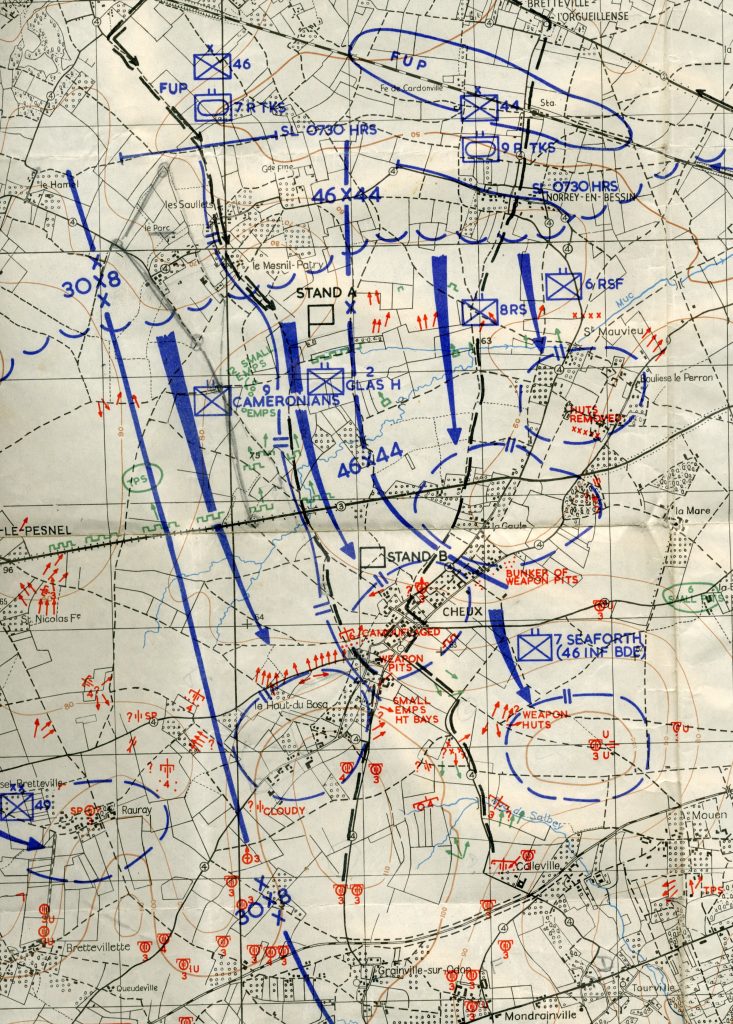
© South Lanarkshire Council.
The evening before the battle commenced, 9th Cameronians’ chaplain, Captain The Rev. Sam Cook, led the men in prayer during a short open-air service. Captian Cook would play an active part in the battle to come, helping wounded men from the battlefield.
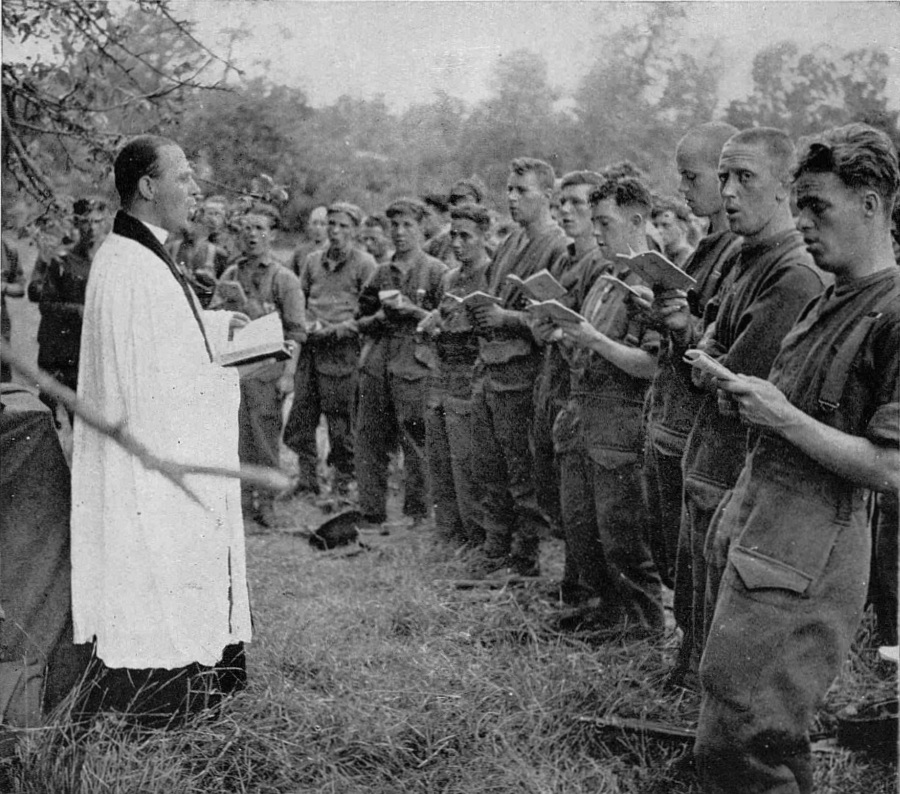
© The Sphere
The battle started at 7:36am on the morning of 26th June. 9th Cameronians started the attack with a strength of 36 officers and 815 Other Ranks.
Lieutenant-Colonel Richard Villiers, 9th Cameronians’ Commanding Officer, recorded in his personal diary:
At ‘H’ hour when we started to move forward there was utter confusion and chaos – or so it seemed to me. The noise of our barrage was terrific, and shells seemed to be falling everywhere. Many of them of course were German defensive fire. Although I intended to watch from various view points, I soon found myself right among the forward coys [companies] in my carrier. I soon lost my gunner and the tank C.O. We had all decided to move together.
Long Ago and Far Away: A travel diary, letters and Second World War letters of Dick and Nancy Villiers edited by their daughter, Linda Yeatman. Privately Published, 2005
‘A’ and ‘B’ Companies led the attack, with ‘C’ and ‘D’ Companies following respectively. A squadron of Churchill tanks from 7 Royal Tank Regiment supported the Battalion. One of the biggest problems encountered during the attack was getting transport vehicles and Anti-Tank guns forward as no roads ran through the Battalion’s objective area.
‘A’ Company, who were on the extreme right flank of the attack, very quickly started to come under heavy fire and suffered many casualties – so much so that ‘C’ Company had to take it’s place at the head of the assault. The fields of long corn over which the Battalion attacked offered good cover to the defending Germans. A group of around 12 men of ‘A’ Company, led by Lieutenant McGregor, were ambushed and killed by a German position concealed in the corn.
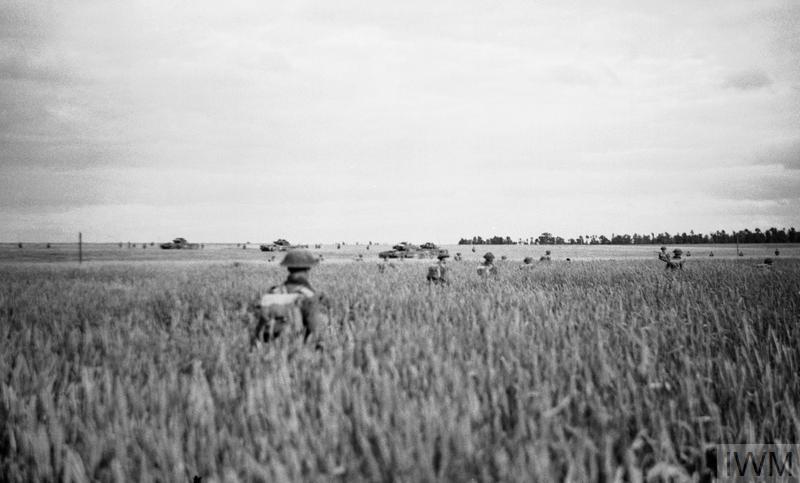
© IWM. (B 6119)
On reaching the objective, a few prisoners were taken but it appeared that most of the enemy had withdrawn. There were still some snipers left in the village and a period of house searching followed. By 1300 hours, le Haut du Bosq was firmly in the hands of 9th Cameronians.

© South Lanarkshire Council.
So ended 9th Cameronians first battle. They had met the German forces in the field and captured their objective. Casualties were considerable. When the Battalion prepared to move off towards its next objective the following morning, its strength had been reduced to 29 officers and 691 Other Ranks. The Battalion’s Second-In-Command, Major Walker, had been wounded in the early stages, as had both Company Commanders of ‘A’ and ‘C’ Company.
The Commonwealth War Graves Commission records the names of 34 Cameronians who fell in action during the attack. Among those killed was Lieutenant L. H. Paff, a Canadian officer who was serving with the British Army as part of the CANLOAN scheme.
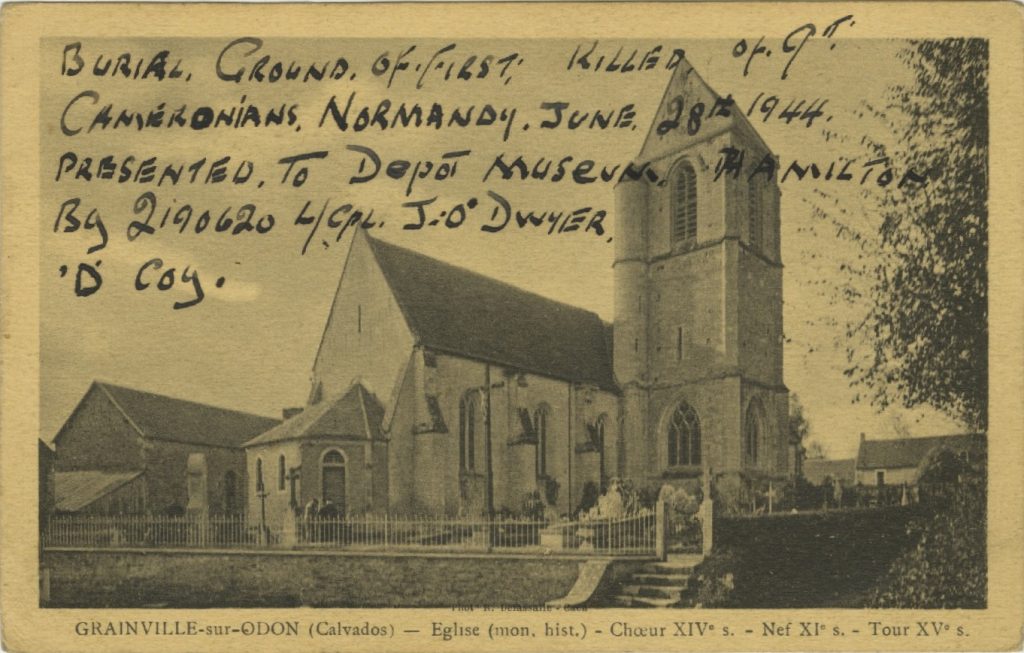
© South Lanarkshire Council
Le Haut du Bosq was the first objective for 9th Cameronians during Operation Epsom but they would have little opportunity for rest. The next day, 27th June, they would attack Grainville-Sur-Odon…
Comments: 1
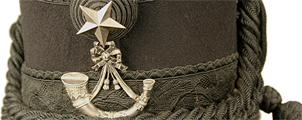
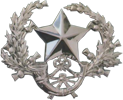

[…] Paff and McDermott were both killed on 26th June 1944 during the attack on le Haut du Bosq. Lieutenant Stewart was killed on 28th September […]